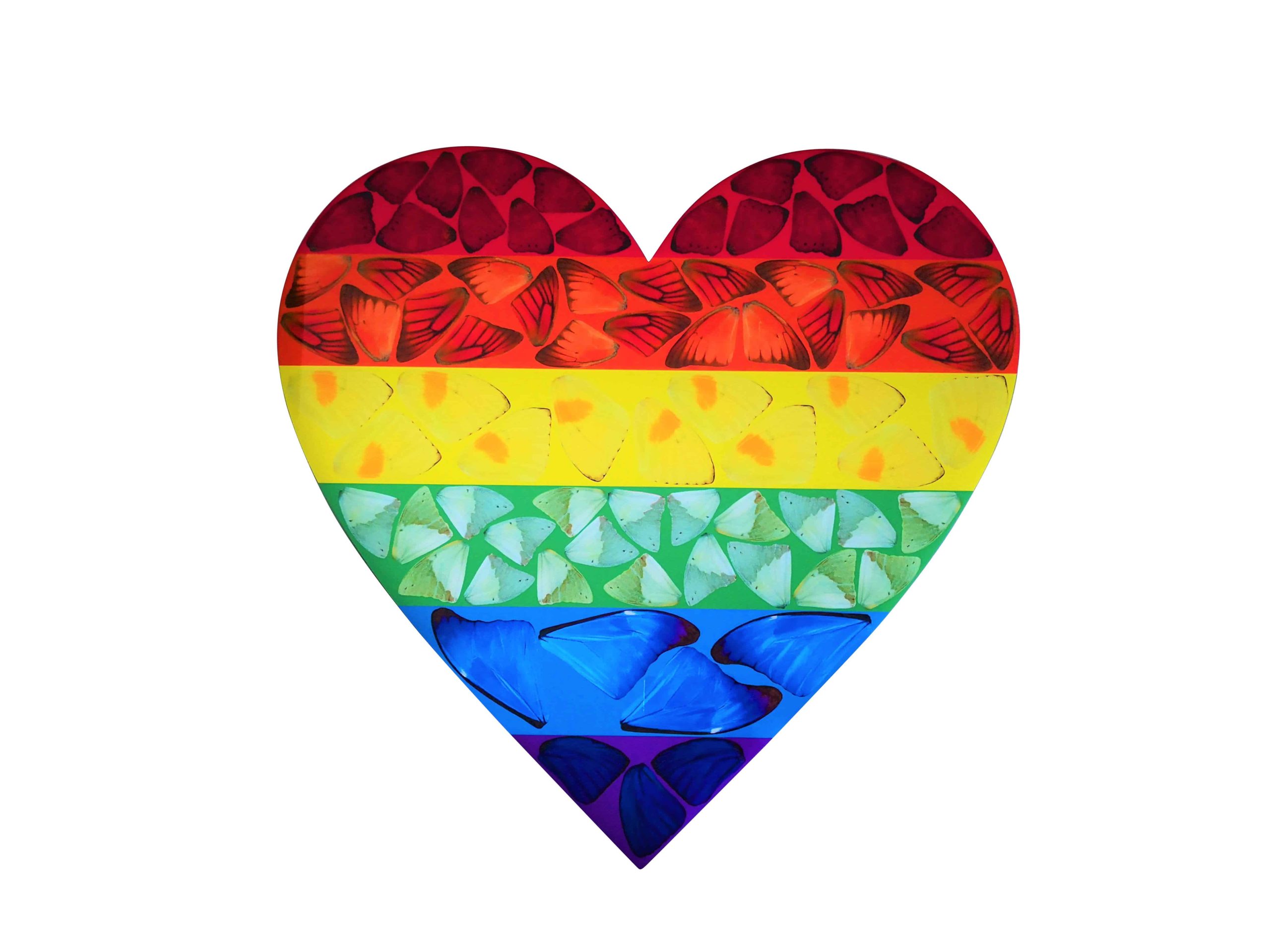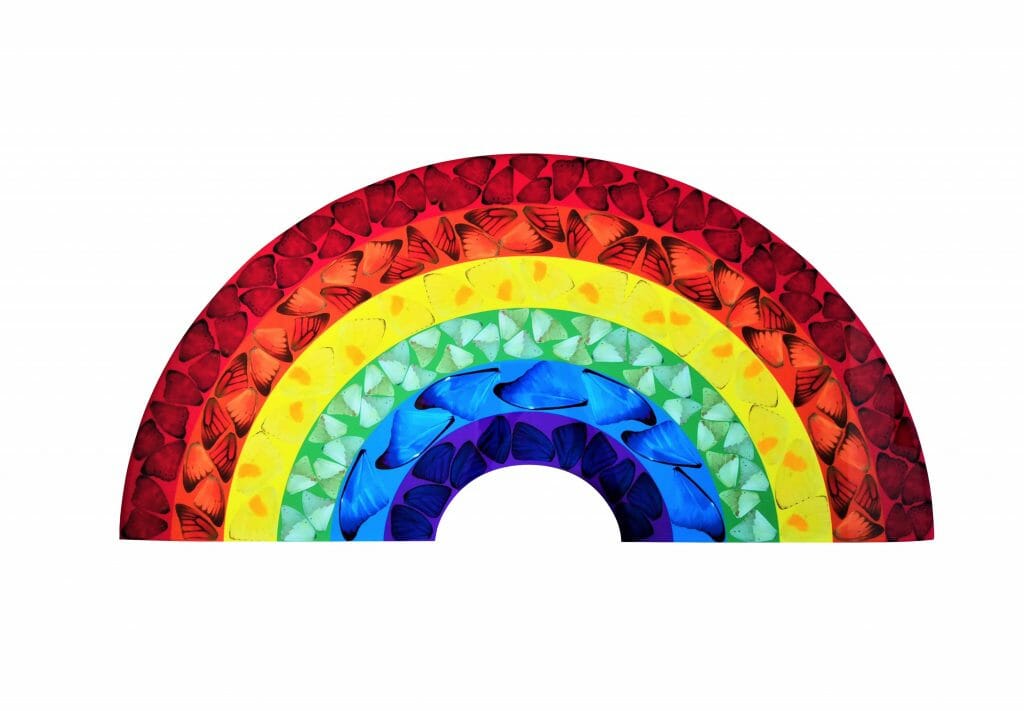
31 Jan Cult-Status Collectibles From Damien Hirst: An Icon Of Our Time
Few artists can claim to have come close to the international notoriety achieved by UK creator Damien Hirst. His work, often shocking in nature, plays rebelliously with themes of science, religion, life and death, and frequently pushes the viewer far from the familiar realms of their comfort zone. Other works, however, are charged with vibrancy, color, and positive energy. Despite the broad spectrum of his creative output, Damien Hirst argues that “Art’s about life and it can’t really be about anything else… there isn’t anything else.” And so, we must ask ourselves, when we view his pieces, what do we discover about our own experience of life?
The Makings Of An Artistic Icon
Damien Hirst was born Damien Steven Brennan in Bristol, before an early move made the city of Leeds the backdrop to his childhood. We can imagine that Damien Hirst’s provocative sensibility may have been stoked by his Irish Catholic mother, who disapproved of Damien Hirst’s antics, to the extent of cutting up his punk-style clothing and even melting his Sex Pistols vinyl record into a bowl. With arrests for shoplifting, and poor grades, Damien Hirst may have given his mother cause to curtail him, but for every disapproval, Damien Hirst’s passion for drawing was always encouraged.
At an early age, Damien Hirst’s determined nature had begun to manifest, as he refused to take no for an answer. Having been initially declined for admission to Jacob Kramer College, he reapplied until eventually accepted into the art college’s Foundational Diploma. Subsequently, he moved to London, where he spent two years working in construction. Once again, his initial application to study Fine Art at Goldsmiths College was refused, but his persistence secured him a place in 1986. While a student, Damien Hirst took a placement at a mortuary – no doubt an experience that became a foundational pivot into his most infamous works: multiple series of real animal carcasses, suspended in glass tanks of formaldehyde.
Elevation To Global Notoriety
In 1991, Charles Saatchi – another icon within the art world – was captivated by Damien Hirst’s initial exploration of this morbid medium, and offered to fund whatever project Damien Hirst wanted to do next. The masterpiece of the resulting collection was titled The Physical Impossibility Of Death In The Mind Of Someone Living, and comprised a 14 foot long tiger shark, displayed in a glass vitrine, which sold for £50,000. This hugely controversial piece drew media attention from around the world, and the collection saw Damien Hirst’s first nomination for the Turner Prize. He would go on to secure the covet-worthy prize four years later.
Damien Hirst’s most revile inducing works have unquestionably been his decomposing pieces, featuring rotting carcasses – and making the lifecycle of the fly and maggot a feature of the work. In 1995, New York public health officials famously banned one such piece, citing a fear of “vomiting among the visitors”. Themes of dark humor lace Damien Hirst’s back-catalog, perhaps enhanced by his 1990 statement: “I can’t wait to get into a position to make really bad art and get away with it.”
However, there is also a thoughtfulness, and exploratory nature to his pieces, as uncomfortable as they may be to view. This quality drew the praise not only of Saatchi, but of heavyweight artist Francis Bacon, before his death in the early stages of Damien Hirst’s career. Tracking the evolution of Damien Hirst’s formaldehyde flooded pieces, a transition towards somehow more refined, if still chilling, concepts can be seen, such as found in his more recent The Dream, a simulated unicorn, from 2008.
Collectibles Created For Nobles Causes
Damien Hirst is also known for his charitable works, perhaps most notably in his long term support for indigenous rights organization Survival International. In 2016, he contributed pieces to Art On A Postcard, a secret auction project supporting the fight against Hepatitis C. Most recently, in May of 2020, he launched a limited collection of works in collaboration with The Felix Project and Heni Editions in support of NHS Charities Together. In the context of front-line NHS workers battling Covid-19, Hirst said “I wanted to do something to support the many people who are risking their lives to help those in need during this time of crisis. The rainbow is a sign of hope and I’m so pleased to release these prints to help fund the brilliant work being done by NHS staff across the country”.
Each work featured the rainbow, which has become a symbol of the fight against the Coronavirus crisis, and butterflies, which are a continuing theme in Damien Hirst’s paintings. The limited edition artwork runs were scaled based upon the number of orders received within a 7 day period. A postcard collection was also released in complement to the project, with 100% of all profits for the project in its entirety going to the NHS. Without a doubt, these highly desirable pieces will become quest-worthy grails within the world of art collectors in the years ahead.


